How To Tell The Difference Between High And Low-Quality Bourbon, According To An Expert
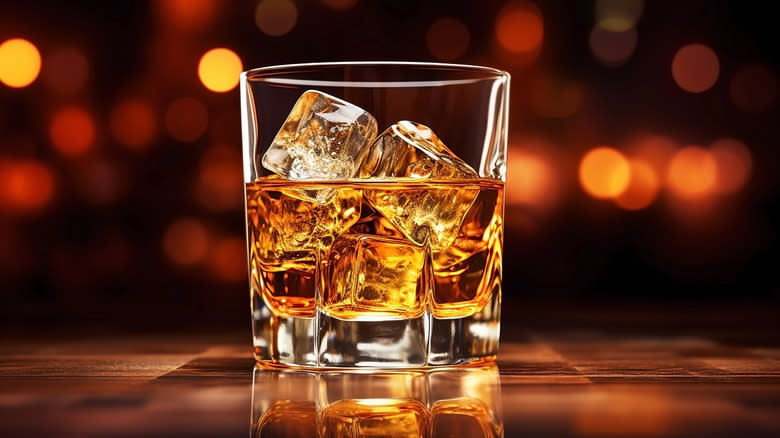
Here's an interesting conundrum: Imagine you're shopping for a gift for a bourbon-loving friend. You want to surprise your buddy with something special, but you're not in a position to do an in-person tasting, or maybe you don't like bourbon, or maybe you just choose not to drink alcoholic beverages. How the heck are you supposed to figure out what's good or, perhaps more importantly, what's not good based on nothing but a wing and prayer? Let's face it, there are dozens of bourbon brands to choose from (including a fair share of celebrity-owned brands), and price alone isn't the sole deciding factor. You could end up paying through the nose for bourbon that wouldn't pass muster among even the least discerning bourbon drinkers.
Fear not; where there's a will, there's a way. Tasting Table spoke with bourbon expert Chris Blatner to get to the bottom of this common dilemma. "For someone new to exploring bourbon, all of the information available can be daunting, which makes it difficult to understand what would be made with high standards and quality," Blatner told Tasting Table. "There are five things to look at (without tasting the whiskey) that will be helpful in determining if a bourbon will be of a higher quality." According to Blatner, an executive bourbon steward, founder of Urban Bourbonist, and executive director of Bourbon Charity, those five factors are labeling, age, price, distillery reputation, and reviews and rewards.
Read more: The 27 Best Bourbon Brands, Ranked
Read The Label
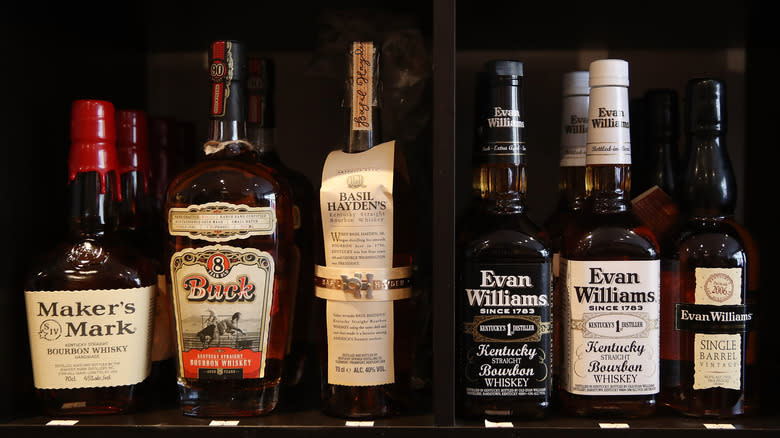
There's more to a bourbon label than the brand name and a cool logo. Look closely to discover hints about a bottle's provenance hidden front and center. "High-quality bourbons often provide detailed information on the label, including age statements, the distillery's name, where it was made, and sometimes specifics about the mash bill (the grain recipe used)," Chris Blatner told Tasting Table. "A bourbon that's transparent about its process and ingredients often signals quality."
For example, if you see the words "straight bourbon" on the label, that's the industry code for bourbon aged at least two years. It also means the bourbon doesn't contain any additives, like coloring or flavor enhancers. That's an important consideration because it takes at least two years for bourbon to develop its signature depth of flavor. Bourbon aged less than two years is often described as floral or green. If you see the word "blended," that means the bottle you're considering may contain flavoring, coloring, or even other neutral spirits, but by law, it must be at least 51% straight bourbon. The label will also indicate where the bourbon was made. While Kentucky is known for its high-quality bourbon — some experts insist it has something to do with natural filtration as fresh water streams through the state's network of limestone riverbeds — authentic bourbon can be distilled anywhere in the United States.
Age Is Just A Number
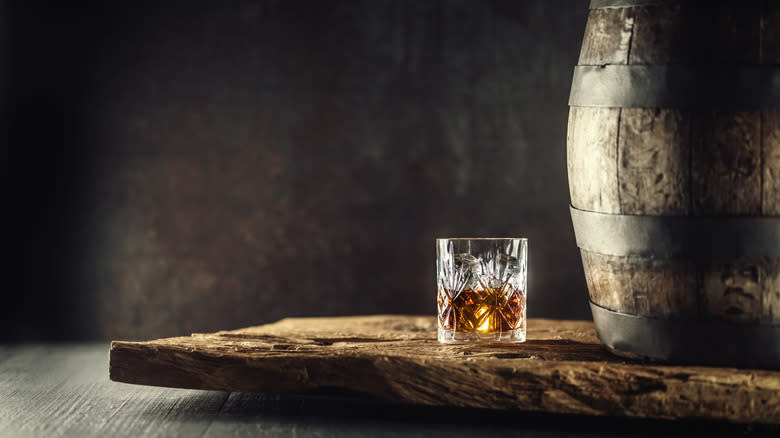
Some consumers prefer younger bourbon, while others seek the depth only time can deliver. That said, there is what's known as the "sweet spot," which is the general age range bourbon experts like Chris Blatner consider the perfect balance. "While age is just part of determining quality, it can indicate the care put into the aging process," Blatner said. "Bourbons aged longer, at least four years, have more time to develop complexity and depth from the interaction with the barrels."
For the record, age refers specifically to the time the bourbon is in the cask, but even something as simple as the age of the bourbon can be deceiving. That's because the number shown on the label is based on the youngest (or least aged) bourbon in the bottle. To achieve the desired balance, a master distiller may combine older and younger bourbon in the same bottle. That means that unless it's specifically labeled single barrel or single cask, a bottle of six-year-old bourbon may contain a blend that includes bourbon that's been aged for eight, 10, or more years. While it's easy to assume the older, the better, that's not necessarily the case. Blatner told Tasting Table, "Too much aging can sometimes overwhelm the whiskey's character and lead to off-flavors, so a balance is key."
Price Doesn't Predict Quality
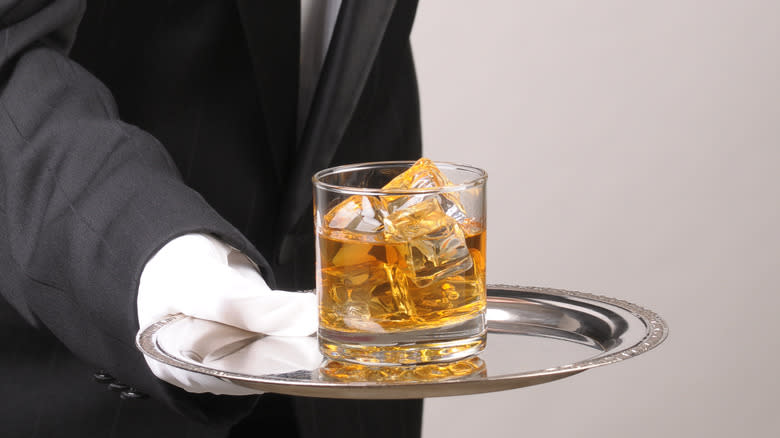
Like many of the finer things in life, paying the highest price doesn't always mean you're getting the best bourbon. Or, as Chris Blatner told Tasting Table, "While price isn't a direct indicator of quality, very cheap bourbons are less likely to offer the depth and complexity of their more expensive counterparts. However, there are absolutely fantastic bourbons at lower price points, so this should be just one of many factors considered."
That's good news for those of us who are not in the habit of forking over big bucks for a tipple. While the bourbon collection at your local liquor store likely includes bottles that retail for $100 or more and inexpensive options like Hiram Walker Ten High Sour Mash — Breaking Bourbon described it as "a forgettable flavored whiskey that drives home the stereotype of bottom shelf bottles" — that goes for under $20, there are plenty of great bourbons available for well under $50. Blatner recommends Old Grand-Dad bonded ($26–$29), Evan Williams bottled-in-bond (under $30), and Old Forester 100 proof ($27–$36).
Do Your Homework
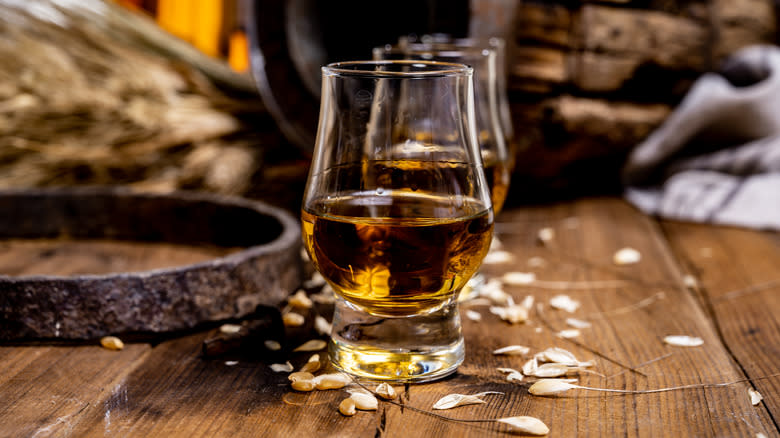
Exploring craft distilleries can be a beautiful thing, but if you are in the market for good bourbon — and not in a position to do a tour and tasting while abiding by the rules of etiquette that go along with that experience — it's best to stick with well-regarded, tried-and-true distilleries. It's even advisable to do a bit of advance sleuthing before heading to the store. "Research the distillery to learn about their distilling philosophies, aging process, and dedication to quality," Chris Blatner said. "Established distilleries that have been distilling for many years with a history of producing high-quality bourbon are often a safe bet."
It's easier than you may think. Narrow your choices to a few well-known distilleries, then check bourbon-centric publications and trade organizations like the American Bourbon Association, the American Distilling Institute, and the Kentucky Bourbon Association for additional background, which will sometimes include announcements about awards and accolades.
Consider Award-Winning Choices
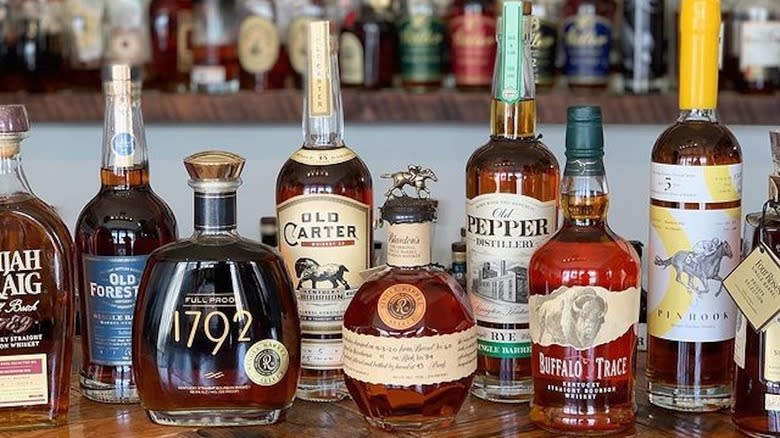
In many cases, the distillery's website will also include a list of awards and accolades. You may even find a few reviews, but keep in mind, the company is likely choosing to feature only reviews of the 5-star variety. That is where a good third-party source can be invaluable. Search online for reviews by bonafide bourbon experts, published authors, and authoritative publications. It's also worth checking the results of recent bourbon award competitions like the World Whiskies Awards.
And keep an eye out for patterns. If the reviews are all over the place, that may be a tell-tale sign of a quality issue. But if independent reviews are consistent, they can lead you to the right bottle at the right price for you. "Looking up professional reviews and awards can be helpful, especially if you're new to bourbon," Chris Blatner said. "While taste is subjective, consistent praise and high ratings from multiple sources can be a good indicator of quality."
Read the original article on Tasting Table

